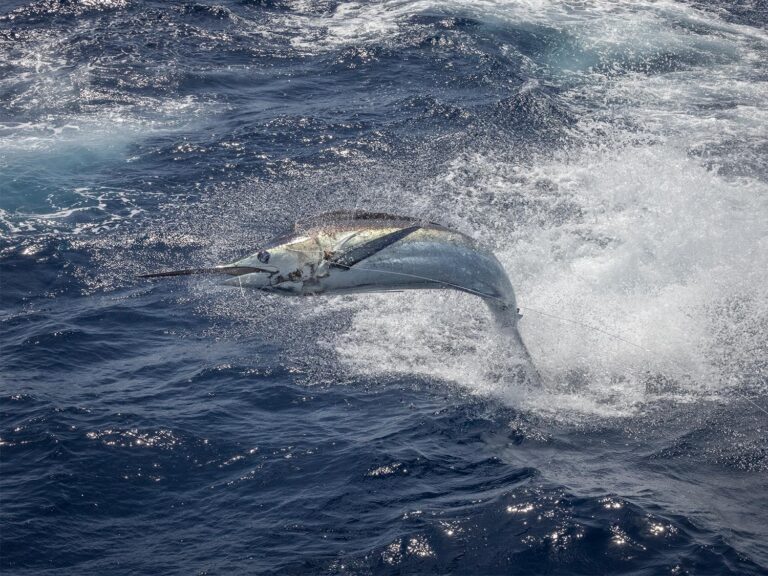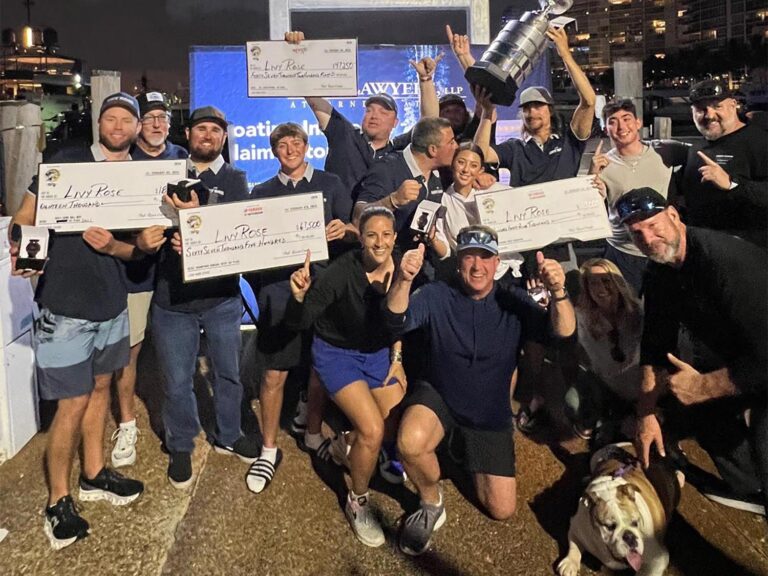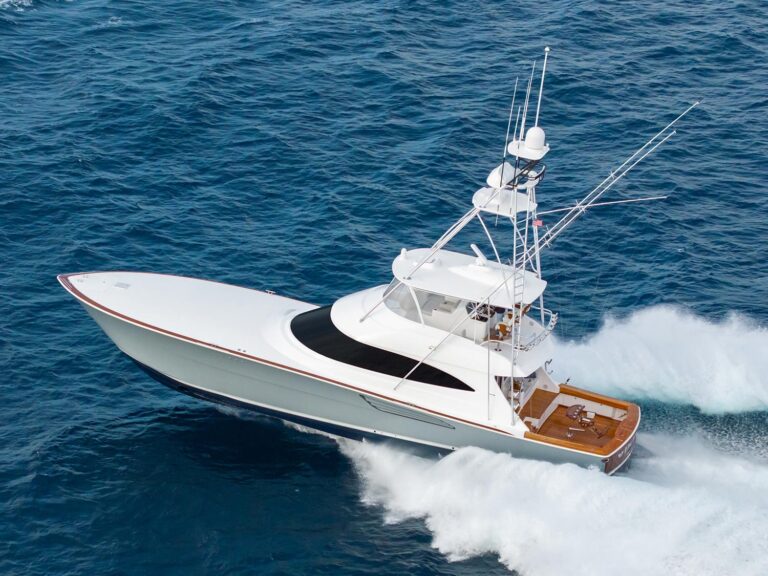
Special delivery: Sign up for the free Marlin email newsletter. Subscribe to Marlin magazine and get a year of highly collectible, keepsake editions – plus access to the digital edition and archives.
You’ve seen his work, even if you didn’t know it. Captivating, almost haunting. An invitation to experience a world that few knew existed. At the time of its creation, his was a singular voice. Now, some six decades later, the photographs of Dade Thornton remain the only lens through which one can experience the formative days of big-game fishing.
Whether it was Palm Beach, Chub Cay, the Bimini Big Game Fishing Club, the Masters, the Silver Sailfish Derby, the International Light Tackle Tournament, Poco Bueno, Hatteras or Piñas Bay, Dade Thornton was there, taking pictures and living on his own terms.
If you’ve seen the old black and whites of Chub Cay or Bimini from the 1960s or 1970s—the classic Rybovich and Merritt boats captured cleanly and clearly atop a Caribbean that is somehow more alluring and mysterious than the same places appear today, if you’ve laid eyes on the photos of anglers in their Sunday best sitting atop bluefin large enough to be couches, if you’ve looked upon the pictures from the formative days of tournament fishing when they stacked on the dock 100-pound blue marlin and 40-pound sailfish alongside as many tuna as they could put on deck—if you’ve seen these pictures, you’ve experienced the work of Thornton.
What you may not have realized, however, is that Thornton was not just a sport-fishing photographer. He was the sport-fishing photographer. Were it not for Thornton’s talent, passion for fishing and travel, and thirst to live life on his own terms, there would, in fact, be no pictures of this golden age of sport fishing. This is the story of his life and career.
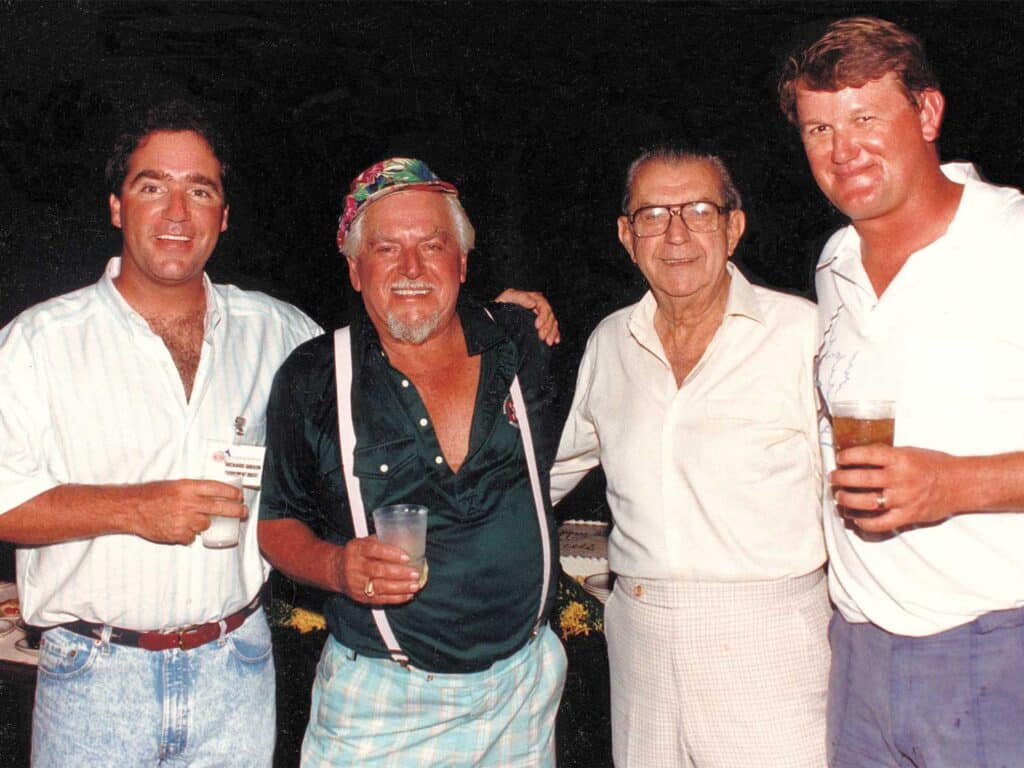
A Luminary, a Very Interesting Luminary
As large of a footprint as Thornton’s photos cast about the history of fishing, he was much more than a photographer. In fact, the range of Thornton’s interests and his skill across disciplines make it difficult to categorize or describe him.
During his lifetime a great many honors were bestowed on him in the fields of public service, photography, writing and even wood carving. The city of Miami recognized Thornton four times as its Citizen of the Month and once as its Citizen of the Year. Thornton was inducted into the IGFA Fishing Hall of Fame in 2012.
Not long before his death in 1998, the Chub Cay Fishing Club recognized Thornton for 25 years of service. It not only commissioned a bronze bust to be placed outside the clubhouse, but presented Thornton with a full-length wooden carving of himself. He authored more than 1,000 articles and was the sport-fishing editor of Southern Boating magazine and a contributor to Tournament Digest. Following his death, an obituary of Thornton appeared in Marlin magazine.
See More: Behind the Lens of Marlin Magazine’s Photographers.
Thornton’s World
A portrait photographer by training, Thornton caught his first sailfish in 1949 from a dugout canoe. In the early 1950s he began his fishing career in earnest, running a 76-foot schooner in the Bahamas. As he traveled, he took photos of boats and fish.
In Bimini a purchasing agent suggested that he compile a photo album for the tuna tournament. Thornton did. Elwood Harry, former president of the IGFA and prominent tournament angler, purchased his first album. This set into motion what was to become perhaps one of the most interesting, varied and impactful careers in the history of big-game sport fishing.
There is a mystery to his photography that no longer exists in modern photography. His was a world of invitation and access that was not otherwise possible in the 1960s and ’70s. As much as the places, Thornton was a people photographer. He was uniquely gifted in the art of capturing essence and feeling. The black and whites, the composition and framing, transport you to the tropics—to the dock after a tournament. You can smell the fish, having sat beneath the tropical sun for hours between capture and photograph. You can feel the salt in the air. You can anticipate the rum drinks.
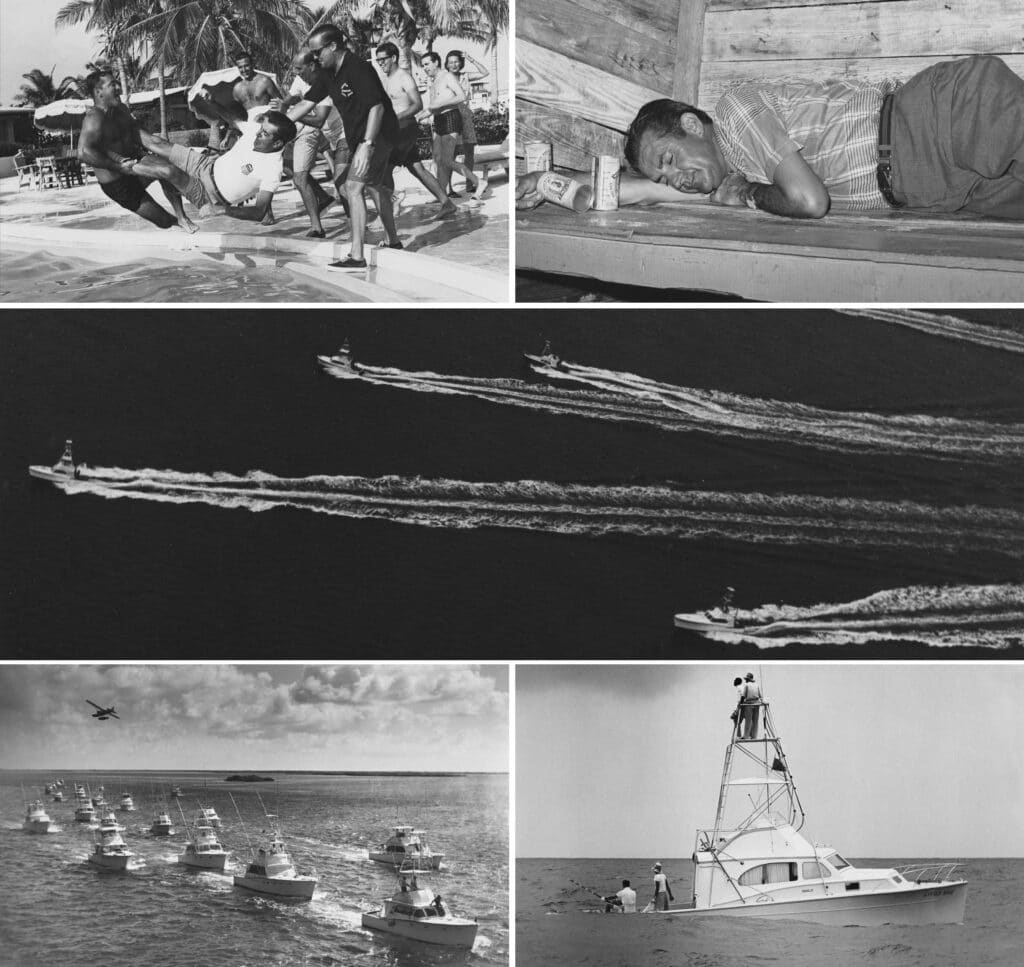
Many of those who knew him best have since passed as well. In its library, the IGFA has a folder of pictures of Thornton—those taken of him, rather than by him. Looking upon these photographs is a journey through his life, an evolution through age. Dark hair turns silver. But the visceral joy that exudes from his face does not change with the years.
There is a wry, authentic smile. One look at him, and you imagine him being as good with a story as he was with his lens. In his younger days, there is a touch of Johnny Depp about his face. Dark hair, a dark goatee—each could be cast quite believably into the role of pirate (nice, adventurous pirate, not the bad kind). As you watch his dark hair turn to gray, you come to understand that this was a man who lived his life fully. It is a journey not just through age, but through adventure.
There are items that arise consistently in these pictures. Guitars. Pipe tobacco. Marlin. There are roosterfish, trophies and plaques. Lots of fishing club and fishing tournament badges. There are lots of smiles.
There are hats whose styles change with the decades and by location. There are cameras, cocktails. Sport coats and style. As often as not, there are beautiful women who are smiling along with him. There are snakes and photos of baby goats and donkey rides. Lots of fishing club emblems.
These photos take you to the thatched undergrowth of some tropical corner of the Caribbean—or maybe the Everglades. As Tom Twyford, longtime executive director of the West Palm Beach Fishing Club, puts it, “Dade was also really good at documenting the social side of tournaments—he was fully engaged.”
There’s a photo of him sprawled out, lying atop a 700-or-so-pound blue marlin in the cockpit of a classic sport-fisher. The fish is covered in canvas or burlap, its giant forked tail emerging past the covering boards. Thornton’s hands are cradled behind the bucket cap atop his head, wake shooting as the boat travels in.
There is an essence to Thornton. It exudes contentment and emotion. Just as the photos he took are marked by framing and composition, photos of Thornton contagiously invite thoughts of adventure. There’s an organic joy and wonder about them that help your brain reconcile how a man can be hailed as a gifted naturalist while being just as famous for his chants to the fish gods.
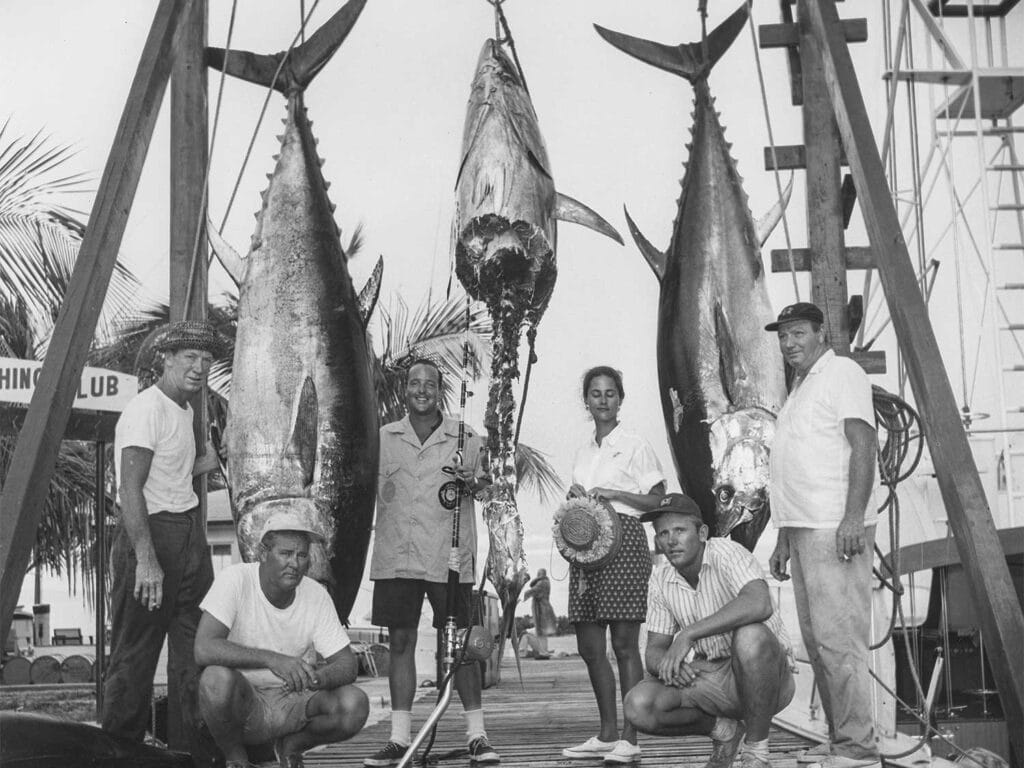
Full Circle
Were anyone ever to be predisposed to leading an interesting Florida-based life, it was perhaps Thornton. He was named after a great uncle, Major Thomas Dade, who was killed in the Dade Massacre in 1835 near Bushnell, Florida. This event triggered one of the Seminole Wars.
With a family history linked to the Sunshine State, Thornton was born in New York in 1923—just 27 years after Flagler’s railroad connected Miami to the rest of the world. In many ways, Thornton’s career would bring this Florida influence full circle. He served as president of the Florida Audubon Society and was widely credited with influencing the founding of Everglades National Park. It’s fitting that Thornton loved the Everglades. After all, there are few better places to practice his passions for alligator wrestling, snake wrangling (sometimes to help medical researchers, sometimes for other reasons), fishing and being around birds.
Giving back to and enriching the resources he enjoyed seems to have been a hallmark of Thornton’s life. Not only was he a committed naturalist, not only do his photos provide the only bridge to the formative days of big-game tournament fishing (he was based in Miami during those years—the glory days of the giant bluefin fishery in the Bahamas, right down the road from the Merritt and Rybovich yards), but Thornton also did such things as serving as pack leader to two separate groups of Boy Scouts at the same time. Nearly 30 years after his passing, generations of offshore fishermen, lovers of wild places, wild bird populations, and many other aspects of Thornton’s diverse passion for life continue to benefit from his influence.
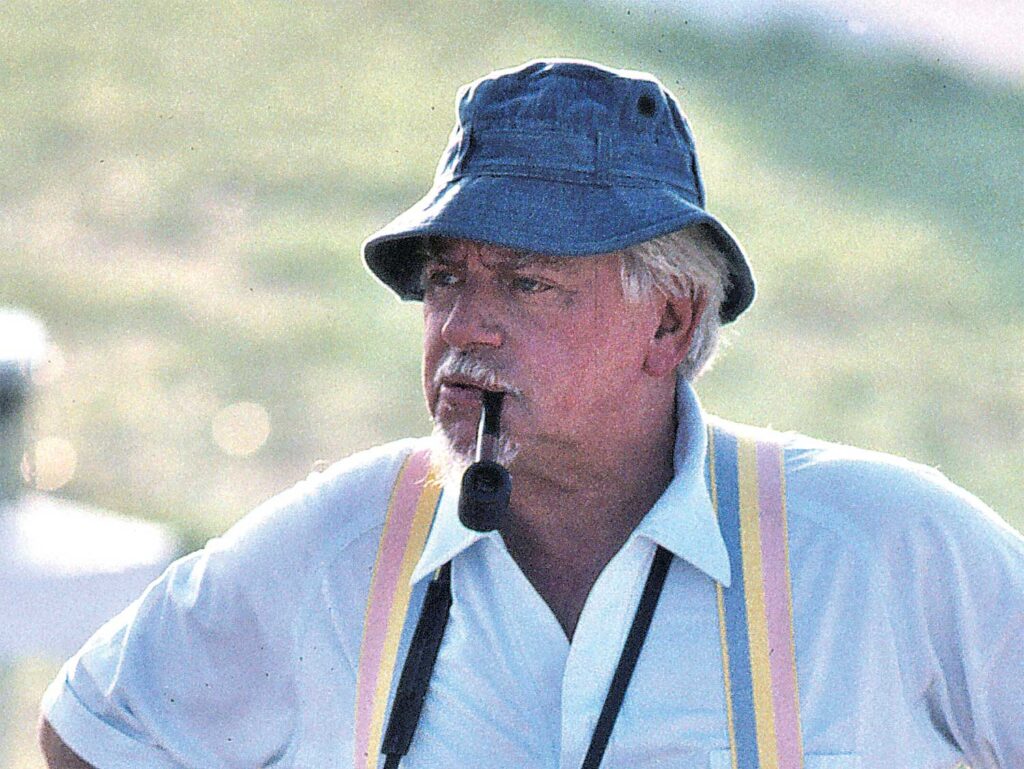
The Man in the Words of Those Who Knew Him
“He was a character,” begins Richard Gibson. Himself a sport-fishing photographer of the highest order, a young Gibson shared the tournament trail with an established Thornton.
“In the ’70s, ’80s, even the ’90s, there were not many photographers in sport fishing,” Gibson says. “There was no auto anything. Everything was manual. You really had to know what you were doing. Dade was a serious photographer. He was a scientist. He could compose. There were very few others—and nobody went to more events. Hatteras, Texas, Piñas Bay, you name it.”
“When I became managing editor of Tournament Digest, he was one of the writers. Dade covered a lot of different tournaments because he made money,” Gibson explains. “He was a unique guy. Tournament directors allowed him to attend to get pictures to document their events. He witnessed a lot of history long before I met him. He deserves a story about his life, and I’m happy we’re doing that.” This feature, in fact, comes at Gibson’s recommendation.
Bailey Bobbitt is another icon of sport-fishing photography. He got his start with Thornton. Bobbitt was raised in Miami and met Thornton while fishing tournaments in the Bahamas with his parents. Needing some instruction for improving his photography, Bobbitt called Thornton.

“He said, ‘Your timing is perfect. I need some help. You can learn on the job.’ We worked together for six or seven years. We traveled to many tournaments together,” Bobbitt recalls.
“Dade was a character for sure. He liked being the center of attention. He stood apart—he wore suspenders and some kind of crazy hat. He smoked a pipe and wore his hair a little longer than most people in those days,” Bobbitt continues. “He was affable and got along with people very well. He got comfortable with people. They were comfortable, so the pictures were good. The albums were great.
“It was so different back then. Nobody carried cameras,” Bobbitt reminisces. “He was the guy. He’d go from Cat Cay, then to the Masters in Palm Beach—that’s how it worked.
“In the early days of tournament fishing, there was lots to take pictures of,” he says with a laugh. “Everybody was there to have a good time, catch lots of fish and drink lots of rum.”
Thanks to the photographs of Dade Thornton, we can be there too.




